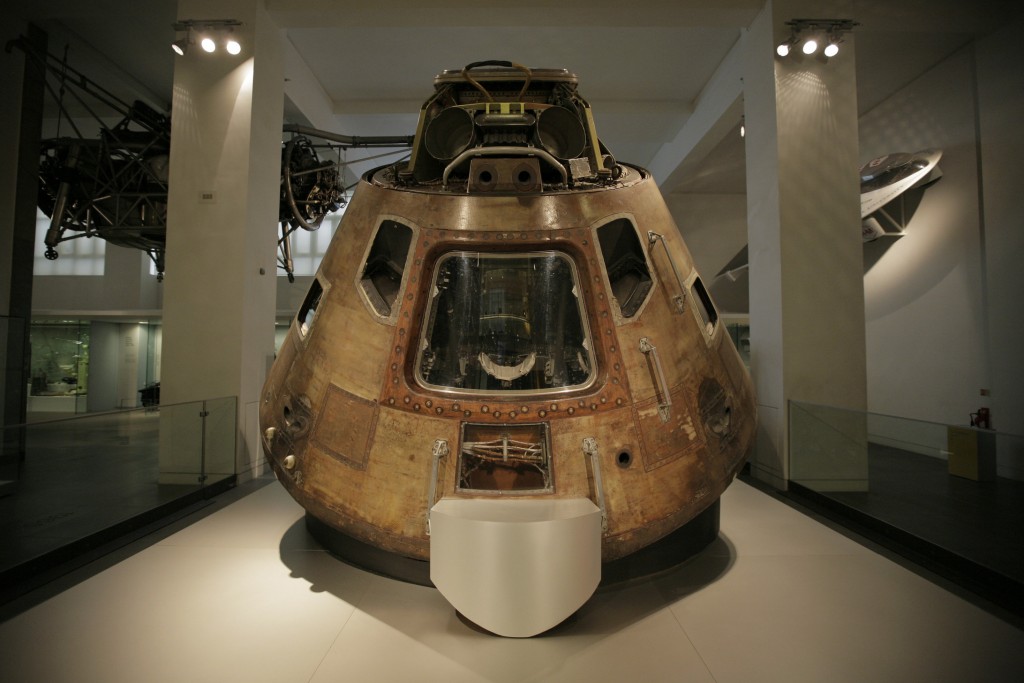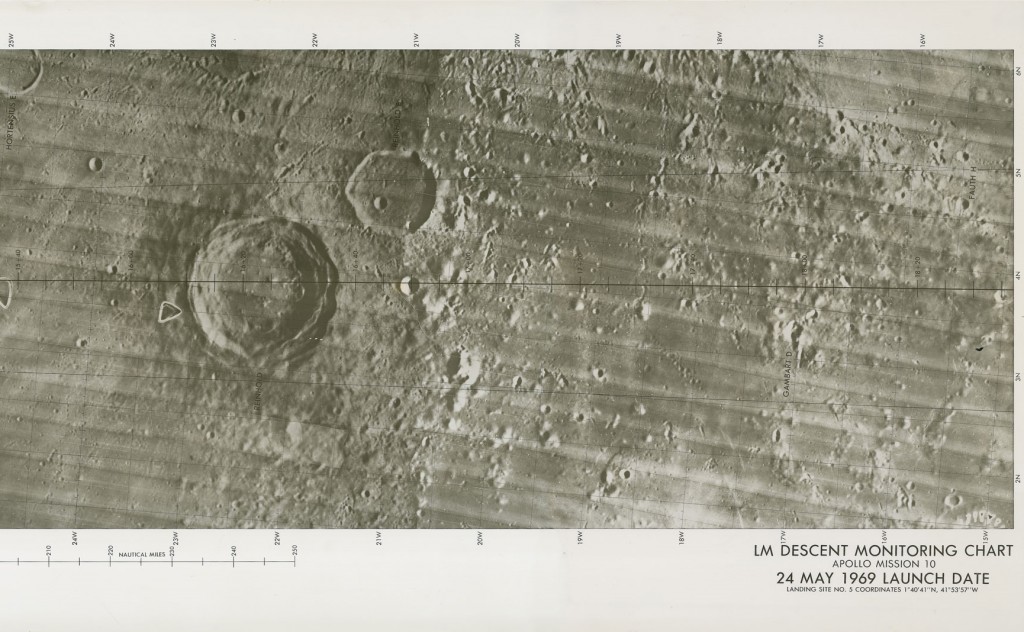On this day (18 May) in 1969 Apollo 10 launched, carrying astronauts Thomas Stafford, John Young and Eugene Cernan to the Moon. This was a dry run for the mission (Apollo 11) that would put the first men on the Moon.
You can see the Apollo 10 Command Module on display in the Museum (and inside it in our Journeys of Invention app). It is an incredible sight and remains the fastest ever manned vehicle, exceeding 24,790 mph (39,887 km/h) on its return to Earth.

But away from public view, NASA produced millions of documents to prepare for each mission. The immense level of detail required in planning human voyages to the Moon is captured in this Apollo 10 Lunar Module Descent Monitoring Chart, which we recently acquired for the museum.

These photographic charts were widely used by NASA to show the surface features that the spacecraft would fly above as it orbited the Moon. Generated from unmanned Lunar Orbiter missions of 1966-67, the charts provided an accurate prediction of where each Apollo spacecraft would be and what features would be visible to the crew and mission controllers at any specific time.

This particular chart was produced for the Apollo 10 mission (using a 24 May 1969 launch date rather than 18 May, the date finally chosen), which tested the lunar module (lander) down to 11 km altitude above the lunar surface. Combining the technical with the aesthetic, the chart shows target landing site number 5, one of several earmarked for future landing missions.
You can discover more about space in our Exploring Space gallery and see the Apollo 10 Command Module in our Making the Modern World gallery.